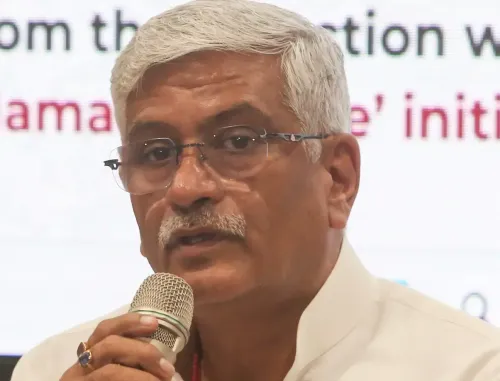Is Urgent Action Needed to Eliminate Lead Exposure?

Synopsis
Key Takeaways
- Lead exposure remains a significant global health risk.
- It affects millions of children and adults worldwide.
- The WHO has called for urgent action to eradicate lead exposure.
- There is no safe level of lead; even minimal exposure can be harmful.
- Comprehensive bans on lead-based products are essential.
New Delhi, Oct 17 (NationPress) Despite being preventable, lead exposure remains a significant global health crisis, impacting millions of both children and adults. The World Health Organization emphasized the need for immediate intervention to address this escalating issue.
Lead can be found in various common products, such as paint, batteries, cosmetics, and even spices. It contaminates air, water, and soil, leading to ongoing exposure in communities around the globe.
This toxic element is responsible for roughly 1.5 million deaths each year, primarily due to cardiovascular diseases, and inflicts irreversible neurological and behavioral harm, especially in young children. Children absorb lead at a significantly higher rate than adults, resulting in decreased IQ, learning difficulties, and behavioral issues. Furthermore, lead exposure poses serious risks to unborn children.
There is no safe amount of lead, and immediate action is essential to eliminate exposure and safeguard future generations, according to the WHO, as they approach the 13th International Lead Poisoning Prevention Week (ILPPW), scheduled for October 19 to 25.
“No level of lead is safe. Every child deserves a future free from this poison,” asserted Dr. Ruediger Krech, Director of the Department of Environment, Climate Change, One Health, and Migration a.i., at the WHO.
“Every child, in every part of the world, deserves a future devoid of lifelong harm that can be avoided. This week, we urge governments, communities, and healthcare providers to take decisive action to eradicate lead exposure and protect the health and potential of the next generation,” Krech added.
Although some progress has been made, including prohibiting lead in petrol and initiatives by various countries to limit lead in paints, the WHO stresses that voluntary measures are insufficient.
It is imperative to implement and strictly enforce comprehensive bans on the manufacturing, importation, sale, and usage of lead-based paints to avert exposure, particularly among children.
The WHO called upon all governments, organizations, and communities to take decisive steps to safeguard children and future generations from this avoidable health hazard.
A recent global study, involving researchers from Kolkata’s Jadavpur University and the National University of Singapore (NUS), highlights that lead exposure remains a financial burden in the 21st century.
Published in the journal Communications Earth & Environment, the study estimates that ongoing childhood lead exposure results in a loss of over $3.4 trillion in economic potential each year globally, disproportionately affecting low- and middle-income countries.
The research indicates that without more robust safeguards, the increasing demand for electrification and the poorly regulated recycling of lead-containing products could exacerbate global inequalities and reverse decades of advancements in child health.










